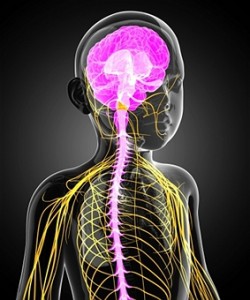Dangers of pain killers vs. Chiropractic adjustments
Heroin addiction came up in the Democratic debate before the holidays. All three candidates acknowledged that prescription opioid pain medications, such as Vicodin and Oxycontin, often open the door to heroin abuse, and we need to tighten up regulations on opioid prescriptions.
Tighter regulation is a great start, but that only solves half of the problem. The thing is, people are in pain. They choose pain medications with serious side effects, because they are not aware of or are apprehensive about alternative methods for pain relief, including chiropractic adjustments.
Chiropractic Myth
Traditional chiropractors tell their patients that chiropractic works by realigning the spinal bones and removing pressure on the nerves. This statement is, at its best, an outdated and oversimplified view of human body.
Current research suggests that a mechanistic model does not adequately explain Chiropractic, and we ought to take neurophysiology into consideration.
The Force
Chiropractic adjustments introduce a mechanical force to a joint that, in turn, kick starts a chain of neurological reactions. (1) Think about a chiropractic adjustment as the force needed to activate certain sensors of the nervous system, rather than the force to move a bone. I know the mechanical, bone-aligning concept is much easier to grasp, but reality is more complicated.
3 Mechanisms Of How A Chiropractic Adjustment Relieves Pain
 Our nervous system has a peripheral (yellow) and a central (purple) component. The long, skinny purple portion represents the spinal cord, and the rest of the purple part is the brain. Evidence has suggested that chiropractic adjustments affect ALL three parts of our nervous system.
Our nervous system has a peripheral (yellow) and a central (purple) component. The long, skinny purple portion represents the spinal cord, and the rest of the purple part is the brain. Evidence has suggested that chiropractic adjustments affect ALL three parts of our nervous system.
-
Peripheral mechanism:
An animal study (2) had found that one single adjustment was able to significantly reduce inflammatory proteins (cytokines) in the blood. These cytokines stimulate sensors on nerve fibers that cause one to have pain and increase sensitivity to pain. (3)
-
Spinal mechanism:
Chiropractic adjustments activate sensors in the muscles (Golgi organs and muscle spindles) (1) that send signals through large sensory fibers. These large sensory fibers are thought to inhibit pain fiber signaling at the spinal cord level. (4)
-
Brain-based mechanism:
Advancing technology has allowed us to directly observe brain activity by measuring blood flow. This gives us direct evidence of how a specific therapy affects the brain. A recent study (5) using functional magnetic resonance imaging (fMRI) had observed that chiropractic adjustment changed the connectivity between brain regions that process pain.
Why Do We Care
- Manual therapists often depend upon an alleged biomechanical mechanism in evaluation and treatment. (1) Unnecessary effort may be spent to correct the biomechanical fault (e.g. a disc bulge), while it has little to do with what the patient is experiencing. More on this topic in my previous blog post on spinal degeneration.
- The neurophysiological model allows the clinicians to consider other potential mechanisms in the treatment of pain.
- Understanding the mechanisms behind the treatment help build patient confidence and trust in their chiropractors.
References:
- Bialosky JE, Bishop MD, Price DD, Robinson ME, George SZ. The mechanisms of manual therapy in the treatment of musculoskeletal pain: a comprehensive model. Man Ther. 2009 Oct;14(5):5310538. [PubMed]
- Teodorczyk-Injeyan JA, Injeyan HS, RueggR. Spinal manipulative therapy therapy reduces inflammatory cytokines but not substance P production in normal subjects. J Manipulative Physiol Ther. 2006;29:14-21. [PubMed]
- Sommer C, Kress M. Recent findings on how proinflammatory cytokines cause pain: peripheral mechanisms in inflammatory and neuropathic hyperalgesia. Neurosci Lett. 2004 May 6;361(1-3):184-7. [PubMed]
- Moayedi M, Davis KD. Theories of pain: from specificity to gate control. J Neurophysiol. 2013 Jan;109(1):5-12. [PubMed]
- Gay CW, Robinson ME, George SZ, Perlstein WM, Bishop MD. Immediate changes following manual therapy in resting state functional connectivity as measured by magnetic resonance imaging (fMRI) in subjects with induced low back pain. J Manipulative Physiol Ther. 2014 Nov-Dec;37(9):614-627. [PubMed]
About the Author
Dr. Lily Semrow is a Board Certified Chiropractic Neurologist who focuses on Neuro-Structural Correction. She has a B.S. in Nutrition and a doctorate in Chiropractic. She has a passion for serving families, and helping people who could not get better through traditional and alternative means.

